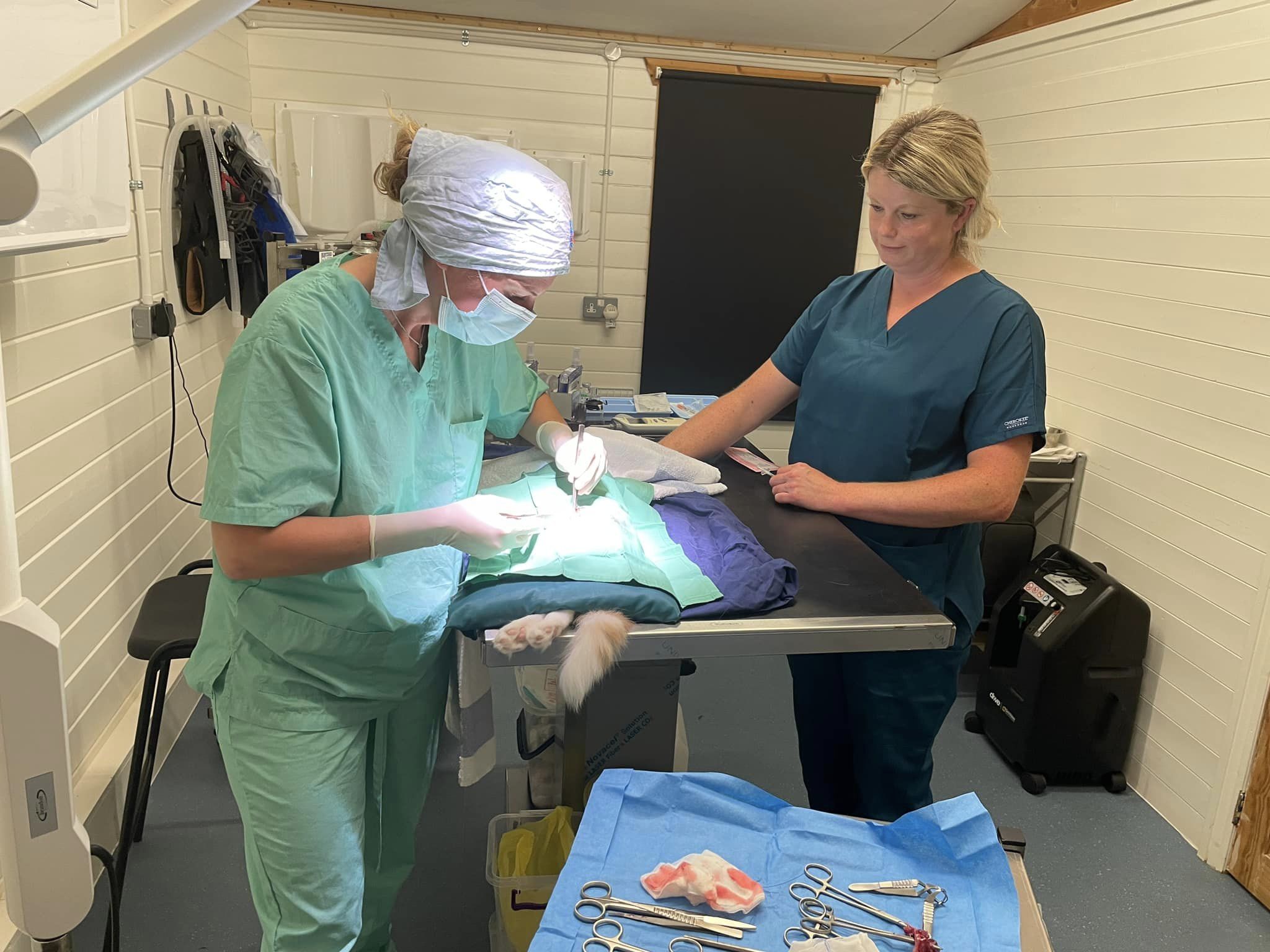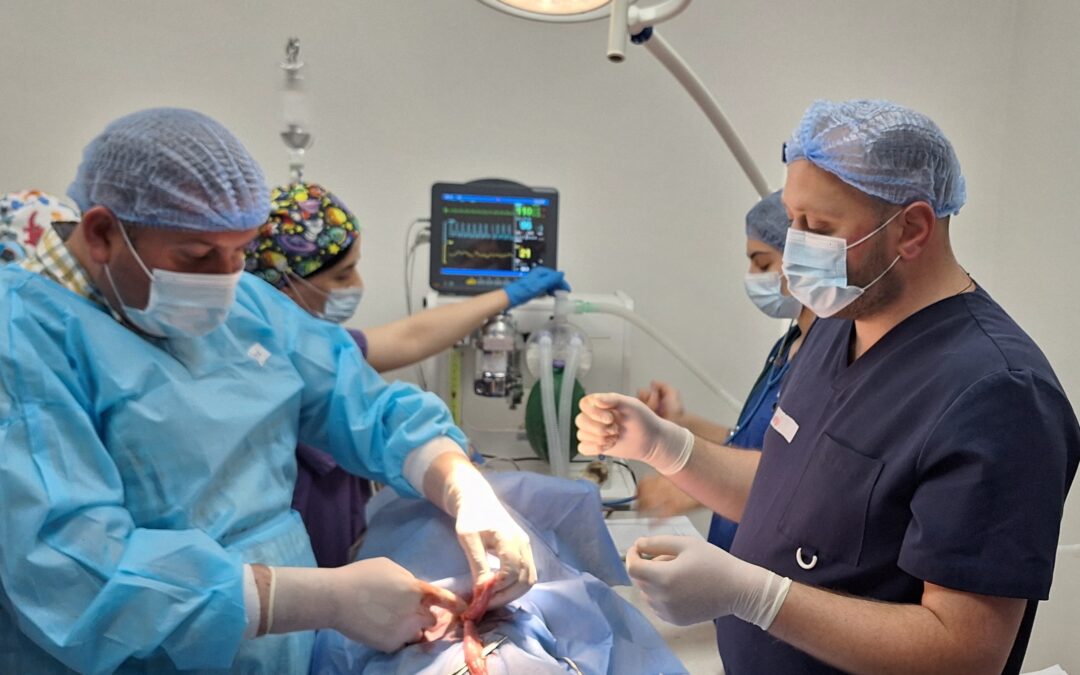Spaying and neutering are surgical procedures aimed at sterilizing pets to prevent reproduction. In female animals, an ovariohysterectomy removes the ovaries, fallopian tubes, and uterus, while an ovariectomy removes just the ovaries. For males, an orchiectomy (neuter) removes the testicles. These surgeries are performed under anesthesia and have numerous benefits for both the animal and the community. (AVMA, N.D.)

BradyCare neutering at The Neuter Project 31 August, 2024. Photo Credit: The Neuter Project.
Why Spaying and Neutering Matters
The World Health Organisation (WHO) estimates that there are over 200 million stray dogs in the world and over 480 million stray cats. Sterilisation programmes are critical for the humane management of stray dog and cat populations. Veterinarians play a central role in these initiatives, working with animal welfare groups and governments to provide sterilization services. These programs also offer vaccines and parasite treatments, further enhancing animal and public health.
Key Benefits of Spay and Neuter Programs
Spaying and neutering dogs and cats has multiple health and behavioural benefits for the animals. But it also has enormous benefits for the community!
- Prevents unwanted litters: significantly reduces the number of unwanted animals, helping to manage dog and cat populations in communities
- Reduces behavioural issues: dog and cats are less likely to stray, scent mark, or engage in conflicts during mating season
- Decreases potential for accidents: less roaming reduces the potential for accidents with vehicles, dog bites with humans, fights with other dogs or cats, and wildlife
- Improving animal health: decreases or eliminates the potential for health issues such as cancers and often fatal infections such as pyometra
- Supports the community: a reduced stray and pet animal population will decrease the numbers of animals at local animal shelters and prevent the spread of fatal diseases like rabies, protecting and improving the well-being and welfare of animals and people

BradyCare filming our neuter surgery on a rescue dog from All Dogs Matter at Aylmer Parade Vet, London, UK. With volunteer veterinary nurse Alexa Vargas and film crew Edward Rolfe and Steve Fletcher (29 August 2024).
BradyCare’s Role
BradyCare’s online surgery modules, such as our upcoming “Bitch Spay” course, empowers veterinarians by offering advanced training. You can check out a sneak preview of the course by clicking here.
Our modules will improve surgical skills, reduce complication rates, and lower surgical mortality rates. BradyCare shows high standards in a cost effective approach- for anyone, anywhere. We understand the challenges animal welfare and veterinary professionals face. With our experience and knowledge, we will enhance our students’ confidence and competence, fostering a lasting, positive impact on global animal welfare.
We hope you enjoyed Part 1 of our Spay and Neuter Blog Series!
Sign up to our newsletter for early bird discount rates and behind-the-scenes news of our upcoming courses.
10 Facts About Spaying and Neutering Dogs and Cats
- Spaying and neutering dogs and cats will increase their lifespans
- Spaying and neutering dogs and cats will reduce cancers such testicular cancer, uterine and breast cancer, or other cancers of the reproductive system
- Spaying female dogs and cats will prevent unplanned pregnancies in pets
- Neutering reduces the need for roaming in male cats and dogs
- Free-roaming dogs and cat populations can be humanely managed through Trap-Neuter-Release (TNR) programmes
- Ear notches done during sterilization surgeries are clear identification marker for dogs and cats that have ben sterilized
- Improved public view and interactions with free-roaming spayed and neutered stray, community, or feral dogs and cats
- Spaying and neutering dogs and cats will reduce costs for the community as it will keep dogs and cats out of overburdened shelters and off the streets- away from vehicles
- Spaying and neutering is cost effective for pet owners- costs far less than caring for litters!
- Spaying and neutering makes a difference for the animals, the environment, and people

